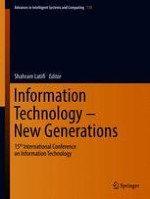2018 | OriginalPaper | Chapter
85. Smart Lighting Controlling System: Case Study of Yarmouk University Museum
Authors : Mohammed Akour, Ziad Al Saad, Abdel Rahman Alasmar, Abdulraheem Aljarrah
Published in: Information Technology - New Generations
Publisher: Springer International Publishing
Activate our intelligent search to find suitable subject content or patents.
Select sections of text to find matching patents with Artificial Intelligence. powered by
Select sections of text to find additional relevant content using AI-assisted search. powered by
